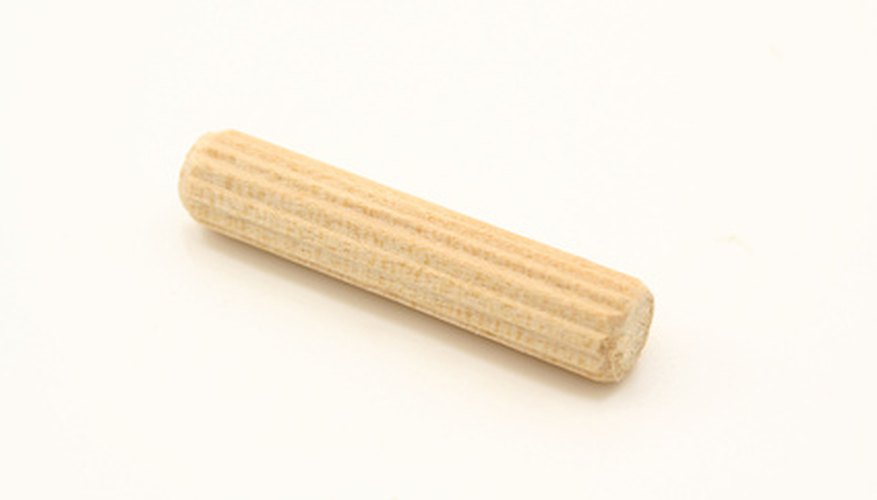Friction holds wooden dowels in a hole drilled in wood. The hole drilled in the wood is slightly smaller in diameter than the outside diameter of the wooden dowel. When a wooden dowel drives into the drilled hole, the dowel compresses and locks in place. The compression makes the wooden dowel difficult to remove. Removal difficulty increases when the dowel is glued in place. Softening the glue before removing the dowel will decrease the difficulty of the removal process.
- Friction holds wooden dowels in a hole drilled in wood.
- The compression makes the wooden dowel difficult to remove.
Add one tbsp of vinegar to one cup of warm water. Mix the two ingredients together with a cotton swab.
Apply a liberal amount of the mixed solution to the wooden dowel. Continue applying the solution until you saturate the wooden dowel.
Set one cedar shims on two parallel sides of the wet wooden dowel. Clamp a pair of self-locking pliers onto the wooden dowel ensuring each jaw of the pliers sits on a cedar shim.
Twist the handles of the self-locking pliers to loosen the wooden dowel. Apply additional mixed solution to the wooden dowel and wait five minutes before attempting to loosen a tight wooden dowel.
Continue applying solution to the wooden dowel and twisting the dowel until it comes out of the hole in the wood.
- Apply a liberal amount of the mixed solution to the wooden dowel.
- Continue applying solution to the wooden dowel and twisting the dowel until it comes out of the hole in the wood.
